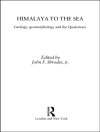For an unknown reason, the Steller sea lion population in Alaska has declined by 80% over the past three decades. In 2001, the National Research Council began a study to assess the many hypotheses proposed to explain the sea lion decline including insufficient food due to fishing or the late 1970s climate/regime shift, a disease epidemic, pollution, illegal shooting, subsistence harvest, and predation by killer whales or sharks. The report’s analysis indicates that the population decline cannot be explained only by a decreased availability of food; hence other factors, such as predation and illegal shooting, deserve further study. The report recommends a management strategy that could help determine the impact of fisheries on sea lion survivalestablishing open and closed fishing areas around sea lion rookeries. This strategy would allow researchers to study sea lions in relatively controlled, contrasting environments. Experimental area closures will help fill some short-term data gaps, but long-term monitoring will be required to understand why sea lions are at a fraction of their former abundance.
Committee on the Alaska Groundfish Fishery and Steller Sea Lions & Division on Earth and Life Studies
Decline of the Steller Sea Lion in Alaskan Waters [EPUB ebook]
Untangling Food Webs and Fishing Nets
Decline of the Steller Sea Lion in Alaskan Waters [EPUB ebook]
Untangling Food Webs and Fishing Nets
购买此电子书可免费获赠一本!
语言 英语 ● 格式 EPUB ● 网页 216 ● ISBN 9780309168724 ● 出版者 National Academies Press ● 发布时间 2003 ● 下载 3 时 ● 货币 EUR ● ID 7142116 ● 复制保护 Adobe DRM
需要具备DRM功能的电子书阅读器












